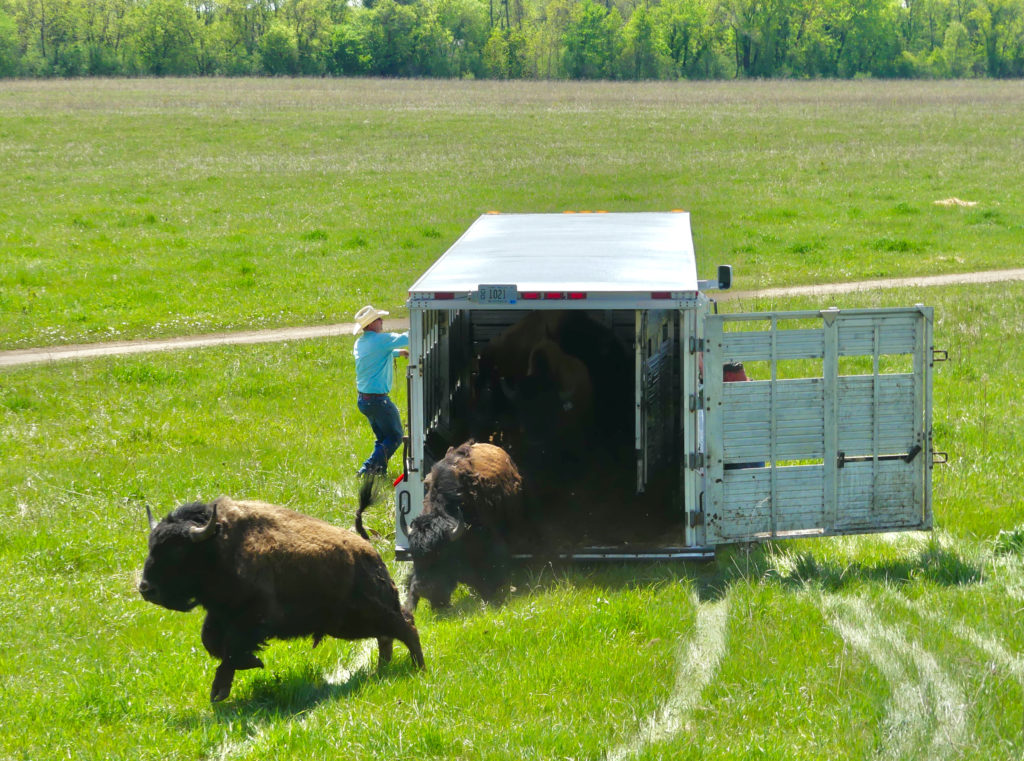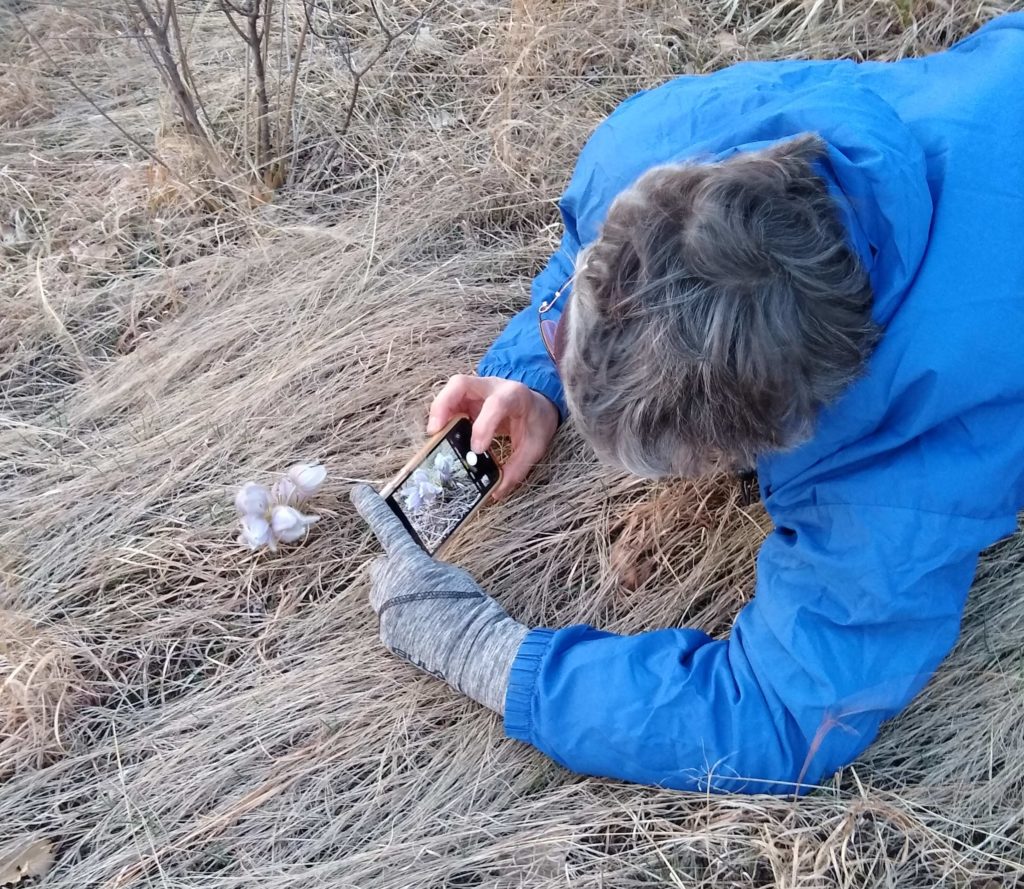Whatever you call them, they are back at Belwin Conservancy!
It’s once again time to welcome back to Belwin a herd of our largest grazers and national mammal, Bison bison.
This charismatic and iconic animal is certainly something that demands your attention. From its intelligent eyes and powerful body to its lustrous fur and intriguing hump, bison capture a part of our hearts with their strength, spirit, and once-wild freedom.
Since we formed our partnership with NorthStarBison nearly 15 years ago, we have received so many questions about bison that we wanted to provide you with answers. Now when you see bison at Belwin or elsewhere, you’ll be more informed and even more amazed!

Bison or Buffalo?
Bison are the largest land mammal in North America. Bison bison is the scientific name of this animal. We know it as either buffalo or bison.
“Bison” is a Greek word meaning ox-like animal. “Buffalo” originated with the French fur trappers, who called these massive beasts bœufs, meaning ox or bullock, so both names have a similar meaning in the United States. In reference to this animal, the term “buffalo,” which dates to 1635, has a longer history than the term “bison,” which was first recorded in 1774.
The two true buffalo are the Water Buffalo (Bubalus bubalis) found in wetlands and marshes of tropical and sub-tropical Asia, which are endangered and live in small, pocketed areas of Nepal, India, Bhutan, and Thailand. The Cape Buffalo (Syncerus caffer), also known as the African (Cape) Buffalo, is found all over sub-Saharan Africa.
Where does the Belwin herd come from?
Belwin has had a partnership with NorthStar Bison from Rice Lake, Wis., since 2008. NorthStar Bison is a family-owned ranch committed to healthy food choices. Bison from NorthStar are grass-fed, which means they are not fed conventional grains or grain silages.
NorthStar makes a conscious commitment to the idea that their products are good for the land, good for the animals, and good for people.

Why bison at Belwin Conservancy?
Bison have evolved with native prairies over thousands of years. They are an integral part of the prairie food web. Plants and animals depend on the bison for many things including the creation of micro-habitats, seed dispersal, and soil enrichment. Bison are the last piece of the restoration puzzle to complete the whole.
Since the early 2000s, Belwin has been interested in having bison on its prairies. The idea was to demonstrate that restoring a prairie could be an economically viable undertaking by producing an alternative meat product that is leaner and healthier than mainstream grain-fed cattle.
NorthStar’s bison spend the summer grazing native grasses such as big bluestem, Indian grass, and switchgrass. This means that they are a healthy, locally grown, sustainably produced product ready for market.
Production herd or conservation herd?
Bison are one of the few mammals in North America that have a dual status as wild animals and livestock. The herd at Belwin is a production (livestock) herd, which means these animals will eventually enter the food web and become, as nature intended, food. Some of the products become pet food or a food source for zoo animals. Many of the products are specifically for human consumption.
Minnesota has four conservation herds at this time, which means they are not harvested for meat products but rather managed for preserving the bison population and genetics. You can visit conservation herds at Blue Mounds State Park, Minneopa State Park, Minnesota Zoo, and Zollman Zoo.
How fast can they run?
Bison can run up to 35 miles per hour!
How high and how far can they jump?
Bison can jump up to 6 feet vertically and 7 feet horizontally.
How much can they eat and drink?
Bison are herbivores (plant eaters) and must consume 1.6 percent of their body mass in grass per day. That’s about 32 pounds of vegetation for a one-ton (2,000 pounds) bull per day. A bison that size will also drink about 30 gallons of water each day.
Why do bison have a hump?
When the snow is deep a bison can clear a path by sweeping its massive head from side to side, using its hump as a counterweight. The hump also puts a majority of the the bison’s mass directly over the front legs, which allows a greater pivot ability to fight any oncoming predators or challenging bulls.
Who are their natural predators?
Major predators of bison are wolves and grizzly bears. No animal in Minnesota is a threat to an adult bison.
Why don’t they stay at Belwin Conservancy all year long?
Belwin does not have a sufficient water source or year-long food source for the animals.
What about this year’s herd?
In 2022, we are hosting 24 male bison. Each weighs 750–950 pounds and will put on roughly 200 pounds over the summer months.

How can I visit them?
Check out the NorthStar herd at the Bison Observation Platform and Prairie, open from dawn to dusk. You’ll be amazed at the resilience, strength, adaptability, and grace of our very own Bison bison!
Learn more about Bison:
“American Buffalo” by– Steven Rinella
“The Impact of Bison at Belwin Conservancy” by– Sean Graese
“Bison: Symbol of the American West” by– Michael S. Sample
Buffalo Hunt by Russell Freedman
“George Catlin’s American Buffalo”
National Bison Association
National Buffalo Foundation

Attend an upcoming event with Lynette as your guide! Visit our events page for more information.